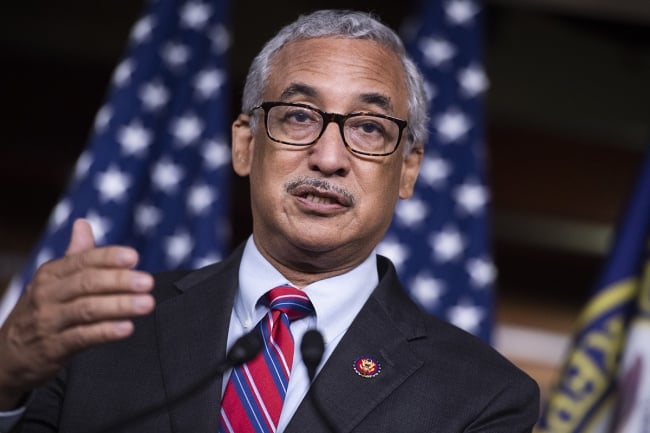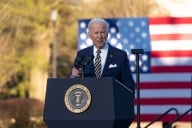You have /5 articles left.
Sign up for a free account or log in.

Virginia representative Bobby Scott, the senior Democrat on the House Education and Workforce Committee, says Congress needs to do more to ensure that students can access higher education. He and other committee Democrats are sharing a blueprint for how to do so.
Tom Williams/CQ-Roll Call, Inc. via Getty Images
House Democrats want to make community college free, double the Pell Grant and fight food insecurity among postsecondary students, as outlined in their just-released vision for how to improve higher education.
Ahead of a hearing Wednesday on the majority Republicans’ plan to overhaul higher education, Democrats on the House Education and Workforce Committee today issued their own blueprint, the Roadmap to College Student Success, shared first with Inside Higher Ed. Initially a package of seven bills, the road map is aimed at making college more affordable, improving access to high-quality programs and supporting students once they are in school.
“The reality is that—despite the promise—higher education remains out of reach for millions of Americans,” said Virginia representative Bobby Scott, the top Democrat on the committee, in a video also released today. “We can and must do better for America’s students.”
Scott and the Democrats say the Republicans’ plan is focused more on saving taxpayer money than ensuring students have what they need to be successful. Their alternative road map builds on consumer protections put in place by the Biden administration, including a new rule that will hold career education programs accountable if they leave students with unaffordable debt or low earnings. Democrats also want to protect students’ ability to choose the type of education they want, whether that’s a liberal arts degree or a shorter-term workforce development program.
The package of bills would expand the Pell Grant to cover graduate programs, require institutions to tell students when they are eligible for federal food assistance programs and waive tuition and fees for two years of community college. Democrats also are seeking to improve federal higher education data systems and better support students with disabilities. More bills will be added to the road map throughout the year.
Although the package is unlikely to move forward in the Republican-controlled House, it does indicate the Democratic Party’s priorities—and perhaps previews their higher ed platform—as the 2024 election begins to heat up.
North Carolina representative Virginia Foxx, the Republican who chairs the education committee, offered her party’s vision for higher education reform last week in the College Cost Reduction Act, a wide-ranging piece of legislation that will be the focus of Wednesday’s markup. Democrats are expected to oppose it. Their road map is not yet a comprehensive answer to that legislation, which is part of a larger effort to reauthorize the Higher Education Act of 1965.
Under Foxx’s bill, colleges would be on the hook for unpaid student loans—a policy known as risk sharing—as part of an effort to hold institutions accountable and bring down the costs of a college education. GOP lawmakers also want to cap student loans and use graduates’ earnings to evaluate programs, among other provisions. Higher education associations and Democrats are particularly concerned about the risk-sharing provisions, which could penalize public institutions serving a high percentage of low-income students.
Oregon representative Suzanne Bonamici, a Democrat on the committee who sponsored several of the bills that are part of the road map, said the blueprint recognizes the value of higher education and represents a good investment.
“So I’m excited about it, particularly in light of the College Cost Reduction Act,” she said. “I do not see how the bill that’s being marked up in committee is going to be a help to students.”
Bonamici is concerned about provisions in the legislation that would roll back consumer protections put in place by the Biden administration and eliminate the Parent Plus and Grad Plus loan programs.
“We should be making it easier to get a college education, not make it harder and more expensive,” she said, noting that many of the programs in the road map are designed to help students get to and through college.
The plan’s focus on student success also reflects greater awareness of the drivers behind the student debt crisis, she said. “We want students to be able to stay in and finish, because a lot of the problem with student loan debt comes from students who start and then for one reason or another cannot finish … Anything we can do to improve retention and eventually graduation is beneficial.”
The Democrats’ plan would give low-income students more financial aid up front and make the first two years of community college free for eligible students. The America’s College Promise Act, introduced in October and part of the road map, also would waive two years of tuition and fees for eligible students at tribal colleges and universities, historically Black colleges and universities, and other minority-serving institutions.
Meanwhile, Scott’s Lowering Obstacles to Achievement Now (LOAN) Act, another part of the road map, would increase the maximum Pell Grant award from $7,395 to $14,000 over the next five years.
Scott noted in his video remarks that the Pell Grant covered 80 percent of a year’s tuition at a state college when the program started in the early 1970s. Today, it covers less than a third of the cost.
“A college degree is the best investment students can make in their future,” Scott said. “And with our help, future generations may have the opportunity to enjoy the lifelong benefits that come with a college degree. Ultimately, our goal remains the same as it was in 1965: regardless of a student’s background, a college degree should never be out of reach.”
A coalition of higher education institutions, nonprofits and advocacy groups has sought to double the Pell Grant for years, arguing that increasing the maximum award would make college more attainable for low-income students. Republican lawmakers support some increases but have said doubling the Pell Grant would be a costly measure that would just lead colleges to raise prices.
Still, doubling Pell is a priority for President Biden, who has committed to doing so by 2029. So far, the maximum award has increased by $900.
The LOAN Act, first introduced in fall 2022 as Democrats’ response to the student debt crisis, would make federal student loans cheaper and easier to pay off in part by capping interest rates at 5 percent and codifying the Biden administration’s changes the Public Service Loan Forgiveness program, which made the targeted relief easier to access. The legislation would also open up federal student aid programs to undocumented students.
This story has been updated.








